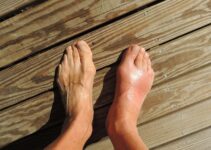Are you tired of letting reactive arthritis control your life? It’s time to take charge and go beyond the basics.
In this article, we will explore the causes, symptoms, complications, diagnostic tests, and treatment options for reactive arthritis. With our help, you can gain a deeper understanding of this condition and find the tools you need to manage it effectively.
Say goodbye to limitations and hello to a life of empowerment. Let’s get started!
Understanding the Causes of Reactive Arthritis
You should be researching the factors contributing to developing reactive arthritis. Understanding the causes and risk factors of this condition is vital for its prevention and management. Reactive arthritis, also known as Reiter’s syndrome, is an inflammatory condition that typically occurs after an infection in another part of the body, such as the urinary tract, gastrointestinal tract, or sexually transmitted infections. The immune system’s response to these infections can trigger an abnormal inflammatory response in the joints.
Several risk factors are associated with developing reactive arthritis. These include a genetic predisposition, having a previous infection, and certain bacterial or viral infections. Sexually transmitted infections like chlamydia and gastrointestinal infections like salmonella and shigella are commonly linked to reactive arthritis.
Prevention and management of reactive arthritis involve several strategies. Firstly, practicing safe sex and maintaining good hygiene can help prevent sexually transmitted infections. Secondly, prompt and effective treatment of any infections can reduce the risk of developing reactive arthritis. Lastly, managing the symptoms of reactive arthritis through medications, physical therapy, and lifestyle modifications can help improve quality of life.
Recognizing the Symptoms of Reactive Arthritis
To effectively recognize the symptoms of reactive arthritis, pay attention to any joint pain or swelling, as well as any unusual urinary or gastrointestinal symptoms. Reactive arthritis, also known as Reiter’s syndrome, is an inflammatory condition that typically develops after an infection in another part of the body, such as the urinary tract or gastrointestinal system. It’s important to be vigilant in observing any changes in your body, as early detection can lead to better outcomes.
One of the distinguishing features of reactive arthritis is the involvement of multiple joints, especially the knees, ankles, and feet. You may experience pain, swelling, and stiffness in these areas. Additionally, some individuals may notice redness and warmth around the affected joints. It’s crucial to differentiate reactive arthritis from other conditions with similar symptoms, such as rheumatoid arthritis or osteoarthritis. This is where the concept of differential diagnosis comes into play.
In order to make a differential diagnosis, healthcare professionals will consider various factors, including your medical history, physical examination findings, and laboratory tests. They may also assess the presence of other symptoms commonly associated with reactive arthritis, such as eye inflammation, skin rashes, or mouth ulcers. By accurately recognizing the distinguishing features and undergoing a thorough differential diagnosis, it becomes possible to provide the appropriate treatment and management strategies for reactive arthritis.
Exploring the Complications of Reactive Arthritis
Exploring the complications of reactive arthritis can provide valuable insights and help healthcare professionals develop effective treatment plans for patients. Reactive arthritis, also known as Reiter’s syndrome, is a condition characterized by joint inflammation that occurs as a reaction to an infection in another part of the body. While the symptoms of reactive arthritis usually resolve within a few months, there can be long-term effects and complications that need to be actively managed.
Complications management is crucial in ensuring the well-being of individuals with reactive arthritis. It involves addressing the various challenges that may arise as a result of the condition. One way to gain a better understanding of these complications is by examining them through a table:
| Complication | Description | Management Strategies |
|---|---|---|
| Uveitis | Inflammation of the eye | Regular eye examinations, anti-inflammatory medications |
| Cardiac Involvement | Inflammation of the heart | Medications to manage inflammation, regular check-ups |
| Osteoporosis | Weakening of the bones | Calcium and vitamin D supplements, weight-bearing exercises |
| Chronic Pain | Persistent joint pain | Physical therapy, pain management techniques |
| Skin Lesions | Rashes and ulcers on the skin | Topical creams, wound care |
Diagnostic Tests for Reactive Arthritis
If you suspect reactive arthritis, it’s important to consult with your healthcare provider and discuss the appropriate diagnostic tests, such as blood tests and imaging studies. These tests play a crucial role in accurately diagnosing reactive arthritis and determining the best course of treatment for you.
Lab tests are commonly used to measure certain markers in your blood that can indicate inflammation or infection. These include tests for C-reactive protein (CRP) and erythrocyte sedimentation rate (ESR). High levels of these markers may suggest the presence of reactive arthritis.
Imaging techniques, such as X-rays and ultrasound, can also provide valuable information about the affected joints. X-rays can help identify any changes in the bones or joints, such as erosion or narrowing. Ultrasound, on the other hand, can help visualize the soft tissues, such as tendons and ligaments, and detect any signs of inflammation or fluid accumulation.
In some cases, your healthcare provider may also recommend other specialized tests, such as a synovial fluid analysis. This test involves removing a small sample of fluid from the affected joint and examining it for signs of infection or inflammation.
Treatment Options for Reactive Arthritis
You can manage reactive arthritis effectively by combining medication for pain relief with lifestyle modifications, such as exercise and physical therapy. Here are some treatment options that you can consider:
- Medication Options
- Nonsteroidal anti-inflammatory drugs (NSAIDs): These medications help reduce pain and inflammation in the joints. They’re available over-the-counter and can provide relief from symptoms.
- Disease-modifying antirheumatic drugs (DMARDs): These medications are prescribed by a doctor and work to slow down the progression of reactive arthritis. They can help reduce joint damage and control symptoms.
- Biologic agents: These medications are a newer class of drugs that target specific components of the immune system. They can be effective in treating inflammation and managing symptoms of reactive arthritis.
- Natural Remedies
- Hot and cold therapy: Applying heat or cold to the affected joints can help reduce pain and inflammation. Heat therapy, such as warm compresses, can help relax muscles and improve blood circulation. Cold therapy, such as ice packs, can numb the area and reduce swelling.
- Herbal supplements: Some herbal supplements, such as turmeric and ginger, have anti-inflammatory properties and may help alleviate symptoms of reactive arthritis. However, it’s important to consult with a healthcare professional before trying any natural remedies.
- Lifestyle Modifications
- Exercise: Regular physical activity can help strengthen the muscles around the joints, improve flexibility, and reduce pain. Low-impact exercises like swimming and cycling are often recommended for people with reactive arthritis.
- Physical therapy: Working with a physical therapist can help improve joint mobility and function. They can provide exercises and techniques to manage pain, strengthen muscles, and improve overall joint health.
Remember to consult with your healthcare provider before starting any new medication or natural remedy. They can provide personalized recommendations based on your specific needs and help you find the best treatment approach for managing reactive arthritis.
Frequently Asked Questions
Can Reactive Arthritis Be Prevented?
You can prevent reactive arthritis by taking preventive measures such as practicing safe sex, avoiding foodborne illnesses, and getting vaccinated. Treatment options include medication, physical therapy, and lifestyle changes to manage symptoms.
Is Reactive Arthritis Contagious?
No, reactive arthritis is not contagious. It is an autoimmune disease caused by an infection in another part of your body. However, if left untreated, it can cause permanent joint damage.
How Long Does Reactive Arthritis Typically Last?
Reactive arthritis typically lasts a few weeks to a few months. Treatment options include nonsteroidal anti-inflammatory drugs, physical therapy, and lifestyle modifications. Remember to consult with a healthcare professional for personalized advice.
Can Reactive Arthritis Affect Children?
Reactive arthritis can affect children, potentially impacting their growth and development. It is important to take preventive measures, especially in high-risk populations, to minimize the risk of developing reactive arthritis.
What Lifestyle Changes Can Help Manage Reactive Arthritis Symptoms?
To manage reactive arthritis symptoms, make lifestyle changes. Modify your diet and incorporate an exercise routine. By adjusting what you eat and staying active, you can alleviate discomfort and improve your overall well-being.






